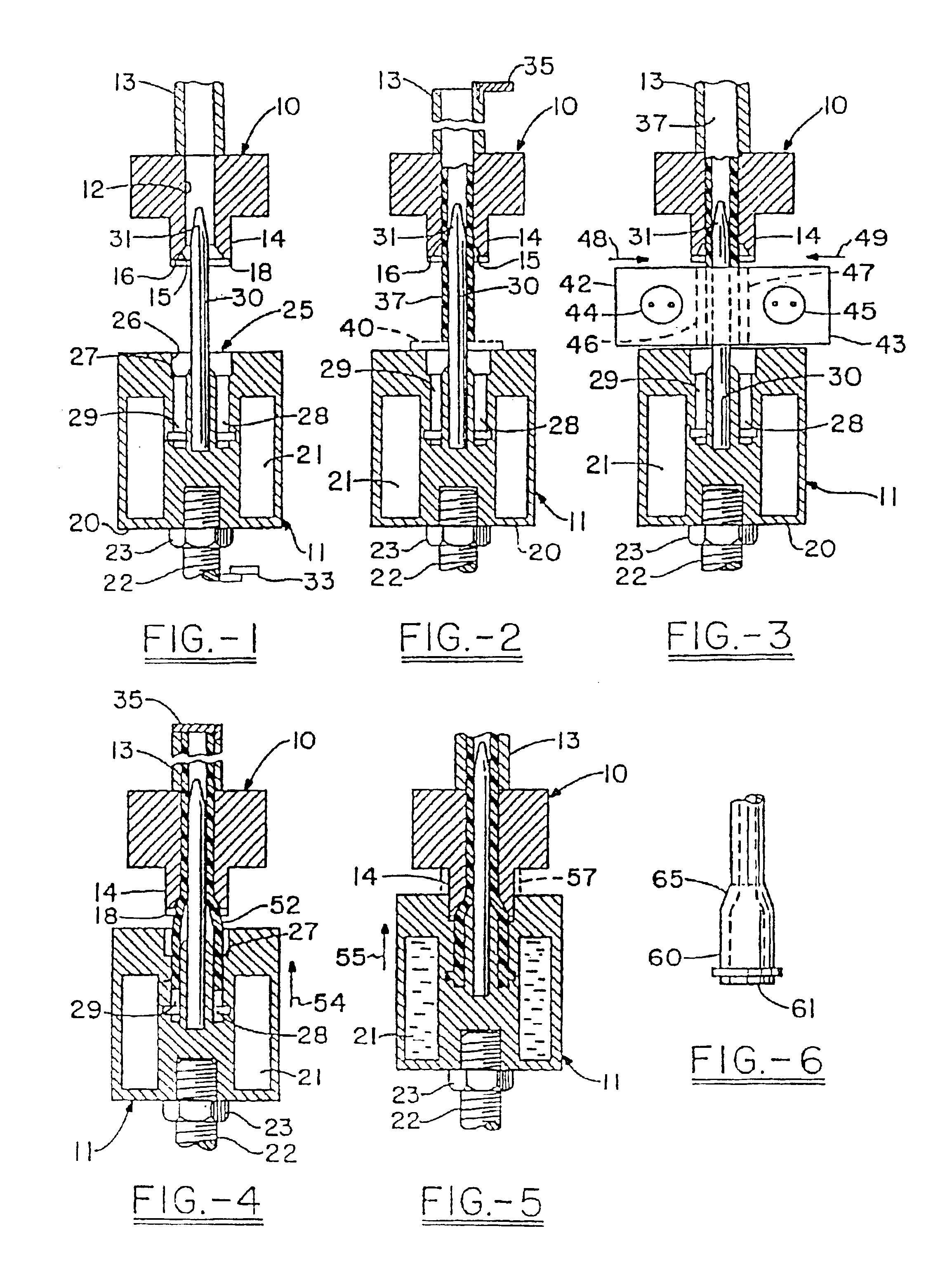Polyolefin connectors
a technology of polyolefin and connector, which is applied in the direction of fluid pressure sealing joints, hose connections, mechanical equipment, etc., can solve the problems of inability to meet the requirements of the application of the hose, the cost of forming the same to permit the connection to such fixtures or tanks, and the cost of such copper tubing and the cost of forming the same to permit the connection, etc., to achieve the effect of ensuring the performance integrity of the two-part tubing end cap
- Summary
- Abstract
- Description
- Claims
- Application Information
AI Technical Summary
Benefits of technology
Problems solved by technology
Method used
Image
Examples
Embodiment Construction
Referring now to the drawings wherein the showing are for purposes of illustrating the preferred embodiment of the invention only and not for purposes of limiting the same, the Figures show cut lengths of plastic tubing upon which various end configurations have been fabricated onto.
As seen in the Figures, the tubing comprises a top vertically fixed mold 10 and a vertically movable bottom mold 11. The top mold or die 10 includes a central bore 12 and a riser tube 13 secured to the top thereof having an I.D. the same as the I.D. of the bore 12. The lower surface of the top mold is provided with a cylindrical projection 14 projecting centrally therefrom. The lower end of the bore is provided with a conical flaring portion 15, the lower end of which is provided with a small radius seen at 16. Radially beyond such radius, the bore is terminated in an axially extending edge 18.
The bottom mold 11 includes a body 20 which may include an annular passage 21 for the circulation of cooling med...
PUM
| Property | Measurement | Unit |
|---|---|---|
| density | aaaaa | aaaaa |
| density | aaaaa | aaaaa |
| flexural modulus | aaaaa | aaaaa |
Abstract
Description
Claims
Application Information
 Login to View More
Login to View More - R&D
- Intellectual Property
- Life Sciences
- Materials
- Tech Scout
- Unparalleled Data Quality
- Higher Quality Content
- 60% Fewer Hallucinations
Browse by: Latest US Patents, China's latest patents, Technical Efficacy Thesaurus, Application Domain, Technology Topic, Popular Technical Reports.
© 2025 PatSnap. All rights reserved.Legal|Privacy policy|Modern Slavery Act Transparency Statement|Sitemap|About US| Contact US: help@patsnap.com



